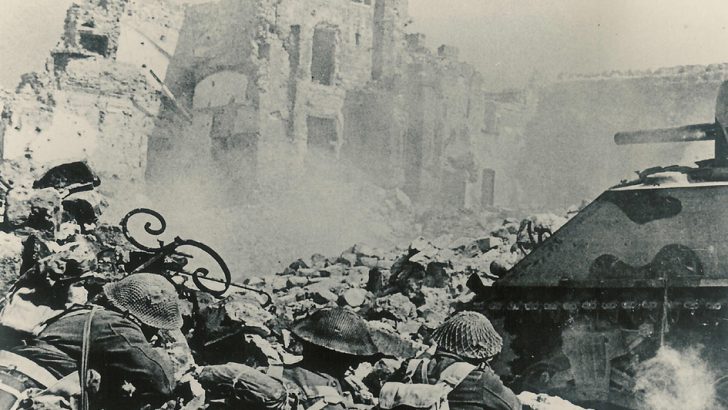Mainly About Books
By the books editor
The other day there came into my hands a unique book, quite unknown I think to readers outside Italy. It is called Monte Cassino under Fire: War Diaries from the Abbey, by Eusebio Grossetti and Martino Matronola, edited by Faustino Avagliano (Abbazia di Montecassino, 2018).
My father often used to mention the attack in February 1944 on the ancient monastery on the summit of Monte Cassino as one of the great crimes of the Allies, here in particular the Americans, in the course of World War II.
The monastery stood, unfortunately for itself, overlooking the main road of advance from the south towards Rome and the north for the Allied armies moving north from Salerno.
It was not in the hands of the Germans at all, as the German commander was anxious that it remained above the struggle. But the Allies feared it would be. If they were in the position of the Germans they would have used it. This book consists of the journals kept by two of the monks through the period, and is a harrowing account of total war
The documents in this book provide a deeply moving account of what was done by the Germans to save the treasures of Monte Cassino. But there is a final chilling moment when the medical officer who did this is reprimanded by his superior. After staying silent, he said he had done it for civilisation.
The officer flared up. If he was so anxious to defend civilisation the place for him was on the Russian front (where near certain death might have overtaken him).
Misreading
Why was the abbey bombed? This only came to light later. Indeed what happened seems little known, even to World War II enthusiasts. A British officer intercepting German radio traffic misinterpreted messages in German, misreading a text which said the abbot (abt in German) was with the monks in the abbey, as the ABT (the German officer commanding a military unit) was in the monastery with the monks.
On this basis, that the abbey was being used by Germans as an observation post, they decided to attack. A ‘fake news’ trail was laid in papers like the Daily Mail to say that German soldiers were occupying the place. The US planes went in February 15, 1944 and totally destroyed the abbey, the historic first house of the Benedictines, founded in 529 by St Benedict himself.
Only then the Allies having broken the agreement to protect the place did the Germans move in, to make use of the heights and so delay even more the Allied advance. The attack on Monte Cassino, was not just a crime, it was a mistake.
US General Mark Clarke (a friend of Eisenhower) disobeyed his British superior in his overweening desire to “liberate Rome”, which had been declared an open city, which allowed the Germans to retreat further north to another prepared line and so add more delay to the end of the war.
The treasures of the abbey, chiefly its incredible library, were largely saved, both from Allied bombs and the rapacity of Field Marshall Goering. The Abbey was rebuilt in the 1950s and stands today a monument not just to Christian humanist scholars, and the monastic life, but to the futility war, whoever wages it.
A ‘fake news’ trail was laid in papers like the Daily Mail
The German officer Becker prepared his memoir of the salvation of the treasures in Dublin in 1964 where he had gone to live after the war. This is one of the attached documents in support of the diaries.
Towards the end of this he writes: “It was the noble and blameless behaviour and attitude of the ordinary soldiers and common people which made the rescue operation so worthwhile and made it such a shining example to emulate.”
Yet he concluded: “This peaceful rescue operation may perhaps, in the following period during the last phase of the war, have led the way for similar ideas and operations. But the destruction of the Abbey invites us to consider the tragic victims of hasty, reckless decisions, which should give pause for thought.”
Address requests for copies to the Gift shop, Abbazia di Montecassino, Via Montecassino s.n.c., 03043 Cassino ( Fr), Italy; shop@abbaziamontecassino.org


 Peter Costello
Peter Costello British troops enter ruins of Monte Cassino.
Photo Credit: Monte Cassino Foundation
British troops enter ruins of Monte Cassino.
Photo Credit: Monte Cassino Foundation 